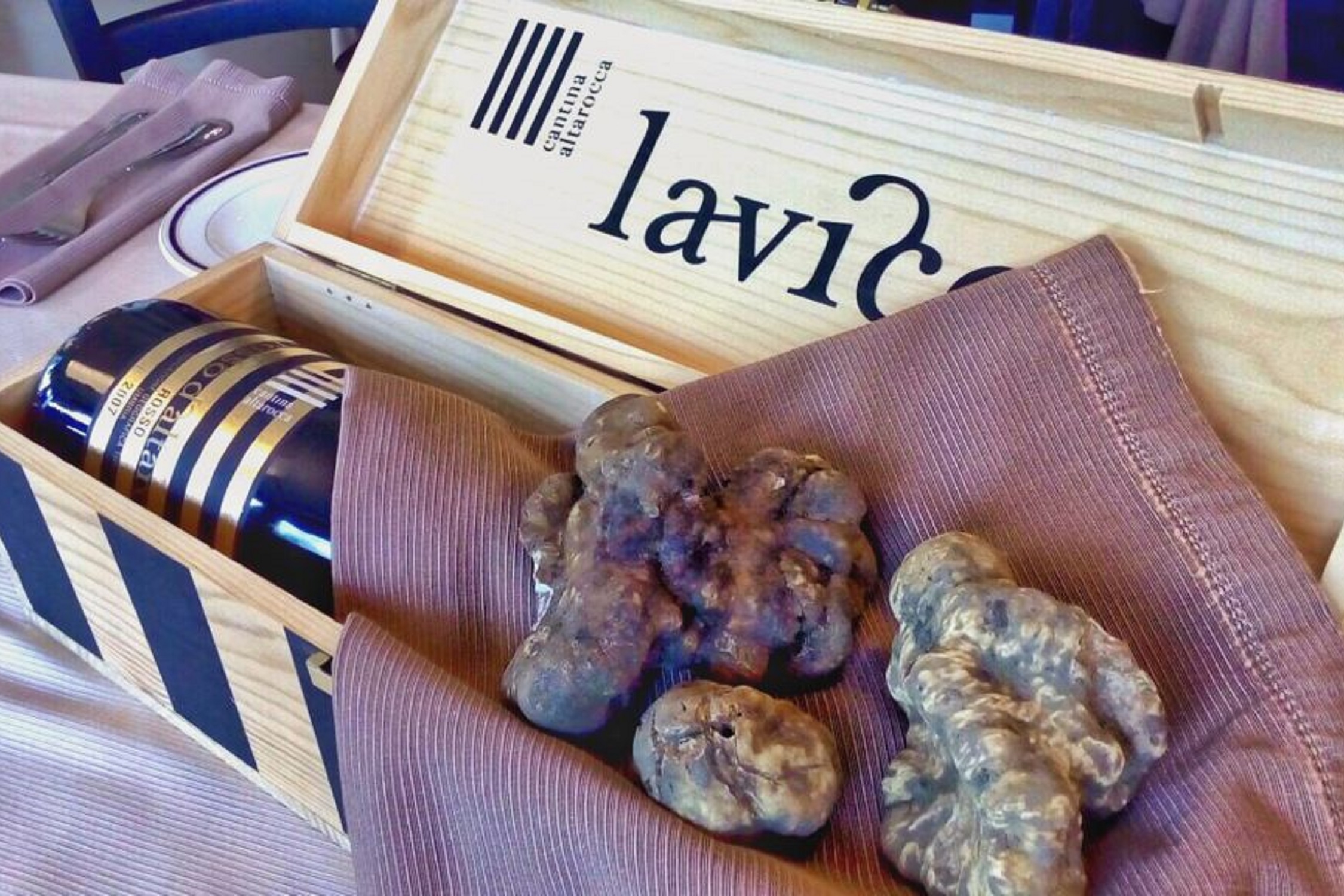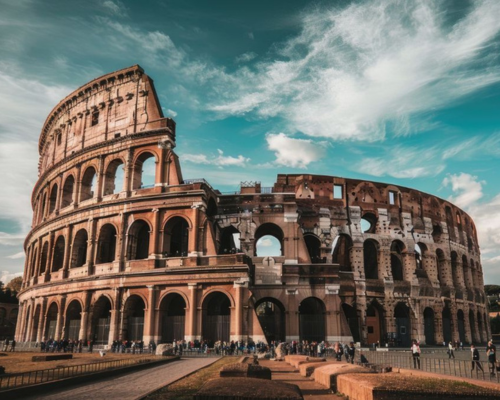UMBRIA, TRUFFLES AND A WHOLE NEW TERRITORY TO DISCOVER
When speaking about truffles, Italy immediately comes to mind. You hardly ever think of the territory of Umbria.
When discussing truffles, you often think of the highly prized white truffle.
The relationship between our country and this very special mushroom is written in the very DNA of the peninsula and, in fact, the most prized Italian white truffle can be found in various parts of Italy.
It is not only the appanage of some specific locations such as Alba and Acqualagna, but it is found in other parts of the country, as well.
Including our Umbria, including our beloved territory around Orvieto.
We decided to share what Umbria has to offer for truffle lovers who seek a memorable Autumn break with the most precious of aromas and flavors.
What types of truffles exist and which of those may be found in Umbria?
To put it simply – truffles are divided in two broad categories: black and white.
Black truffles are more frequent, less aromatic, and less valuable, while white truffles have a more intense aroma, a different taste and are considered the most valuable, because they are less common than black.
As previously noted, although some truffles in particular are more well known, such as the White Truffle of Alba , in Piedmont, and the White Truffle of Acqualagna, in the Marche region, there are valuable truffles that have nothing to envy in respect to their more well-known cousins also in Umbria. In the valley of the Tevere, in the territories of Gubbio, in our own Orvieto, Città di Castello and Gualdo Tadino, the white truffle is harvested from October to December.
Round and light in color, with a hazelnut to brown pulp depending on how ripe it is when it is harvested: it is the most prized truffle, with an unmistakable aroma, and must be strictly consumed raw.
Certainly, the most well-known Umbrian truffle is the prized black, which is often identified as the Norcia or Spoleto truffle. It may be found along the Nera river, on the mountains surrounding Spoleto and on the Trevi and Subasio mountains, from 250 to 1000 meters above sea level.
The small size is usually the most common. The truffle is slightly larger than a walnut, black in color, with a wrinkled rind, and black pulp with lighter streaks. It is a truffle that can also be eaten cooked, without losing its aroma.
Then, there are its younger brothers, the Scorzone, a black truffle with a less intense aroma that also has its summer variety, used for sauces and sausages, and the Bianchetto, which is found both in the plains and in the mountains, with a reddish color and veined pulp with a smell that tastes a bit of garlic. It is less valuable than the white prince, but just as highly regarded.
What are the seasons of the umbrian truffle?
In Umbria truffles are harvested year-round, except in the months of May and September, when they are fully ripe, otherwise they would not have the classic aroma.
The white truffle is usually found from the end of September to the end of the year, the black truffle from December to March, the summer Scorzone from the end of May to that of August and the winter and the Bianchetto from the beginning of the year to the arrival of spring.
We might say that it is always the perfect moment to choose the Umbria / truffle combination, because there is never a shortage of opportunities to enjoy the territory and what it offers in terms of aromas and unforgettable flavors for the most discerning palates.
How has the truffle changed based on global warming?
The good news, which we would like to immediately share, is that the quality of the Umbrian truffle in recent years has never decreased, on the contrary.
The great fortune of this wonder of nature is that it needs very little to become the best version of itself, and as long as there is just the right relationship between the amount of water to the soil, the truffle will continue to exist and amaze us as a delicacy.
The problem, child of global warming, is the extreme weather conditions to which we are all becoming accustomed.
We asked our trusted truffle hunter, with many years of experience in the sector, what effects he has noticed on truffles in recent years as a result of climate changes.
“Truffles are not like mushrooms, which require only fifteen days of rain to emerge. The spores of the truffle are formed over a three-month period, so if the soil does not receive the right amount of rain distributed over time, the truffle will not appear. This is why drought or a lack of adequate precipitation is the great enemy of the Umbrian sandy and clay-rich soils, of truffles, and of all of us.
Torrential rains are also problematic, especially for the white truffle that grows near the ditches: these violent rains often cause the soil to collapse, expose and damage the roots of the poplars that grow in those points, and prevent the spores of the truffle from growing and developing. “.
Fortunately, as we stated, the quality of the truffles that do grow has not changed, it remains very high, but the alarm has sounded and must be acknowledged.
The truffle in orvieto and the surrounding area
It is not only the Umbrian truffle that is less known in respect to other varieties: we may also extend the discussion to the Umbrian territory, and to particular areas – such as the surroundings of Orvieto – which share the fate of being a bit off the beaten path.
Perhaps the Umbrian character has something to do with this – to put it in the words of Sabrina Ceprini, the owner of Altarocca Wine Resort: “The classic Umbrian is typically shy, not apparently overly welcoming: this clashes a little with the concept of tourism and hospitality, but sometimes it is precisely this type of authenticity that conquers the visitor, who has grown tired of the ‘usual destinations’ overrun by mass tourism. “
The strength of Umbria is that of being an authentic land, which has remained proudly anchored to its traditions, for better or for worse.
Tourists who arrive in Umbria (including Italians, not just foreigners) are generally surprised to discover that Orvieto and its territory are extremely rich in cultural, artistic, culinary and wine excellences.
Quality: the key word is quality.
The Region of Umbria, Orvieto, the surrounding area, and the Umbrian truffle offer quality experiences; there are many stories to be told, endless discoveries to be made.
It does not take much: only a few days are necessary to live unforgettable moments of relaxation in nature to experience the resulting sensation of total well-being (we have a specific offer for just that at Altarocca), or choose to travel the area by bicycle, to slow down the hectic pace and allow yourself to discover unique wonders (we have an offer dedicated to this type of natural experience, as well).
The umbrian truffle in the kitchen: perfect pairings
In regard to the truffle, aside from the differences between whites, blacks, and the variants within the categories, there is an unwritten rule that always applies: the less you enhance the truffle, and the more naturally it is presented, the better.
However, this does not mean that the flavor of truffles cannot be combined with other – sometimes unpredictable – flavors that characterize our Umbrian and Italian cuisine.
We thought to propose some pairings, based on the experience of our Chef Gian Giacomo Blesio, who creates the Invinum menu every day at Altarocca. .
This is what he told us.
“Fresh truffles are never the same: the taste and aromas change according to the quality and the season. The black truffle is less intense, with a sweeter flavor with hints of mushrooms and earth, and is perfect in combination with beef and pork, eggs, potatoes, fresh cheeses, and spinach.
The white truffle, on the other hand, has a more intense aroma with sulphurous and spicy notes of garlic and mushrooms. It goes very well with cauliflower, potatoes, eggs, and grilled meats. It should be left on its own, without masking its flavor.
At Invinum, inside Altarocca Wine Resort, we offer black truffles as an appetizer, paired with a soft crunchy egg with cheese and pepper cream and a salty crumble with bacon, or with our classic first course of black truffle strozzapreti with spinach and creamy buffalo burratina. We also offer a second course that may be considered a bit “over the top”, with sliced cod cooked in oil accompanied by mashed potatoes with fennel and black truffle.
Alternatively speaking, we present the white truffle, very simply with egg noodles creamed with Parmesan cheese, fried or scrambled eggs or in combination with all grilled meats, from thinly sliced meat to steak. It is the best way, in our opinion, to enhance its flavor.”
Invinum is the Altarocca Wine Resort restaurant: the menu is seasonal, adheres to the flavors of the Umbrian territory, and changes frequently.
Pairing wine with truffles: how to do it and how to do it daringly
Wine and truffles naturally go hand in hand, but not as simply as it might appear.
To be able to make the most of the pairing, perhaps even during a dinner at home with friends, we asked Emiliano Sirchia, Director of Altarocca Wine Resort, deus ex-machina of our wine cellar and veteran wine connoisseur, to tell us how wine and truffles are paired in our restaurant.
The pairings – Emiliano told us – “are the result of experimentation, knowledge, and subjective evaluation: there is no absolute rule for all palates.
The truffle usually goes well with not too structured red wines, whose soft tannin does not override the structure of the dish and the flavor of the truffle. At Invinum, in our restaurant, we think that there are some basic criteria for every winning combination, but we are convinced that we must give space to creativity.
For this reason, we often combine the truffle with our Bianco d’Altarocca, a chardonnay fermented and aged in French oak: savory, fragrant, of medium structure and aromatic complexity, even better if evolved according to the right aging period which reduces its acidity. It is a perfect wine for truffles: it never dominates and accompanies with grace “.


